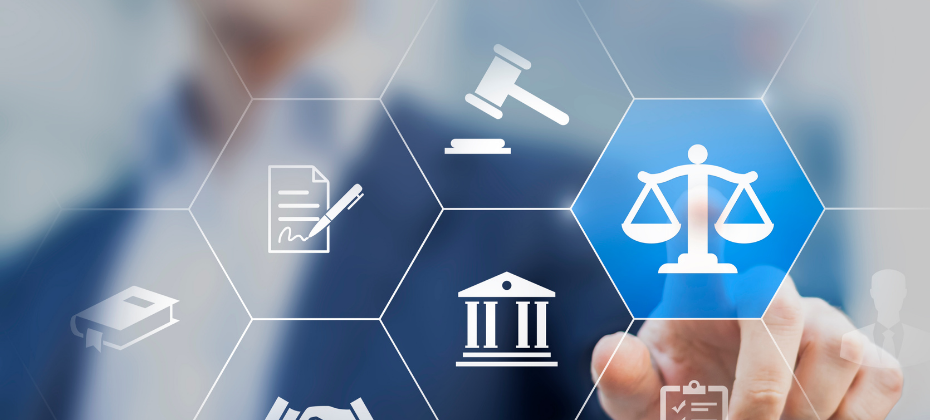Tag: right party contact

Automation, artificial intelligence and machine learning are at the forefront of the continued digital transformation within the world of collections. And organizations from across industries — including healthcare, financial services and the public sector — are learning how automated debt collection can improve their workflows and strategies. When implemented well, automation can ease pressure from call center agents, which can be especially important when there's a tight labor market and retention is top of mind for every employer. Automated systems can also help improve recovery rates while minimizing the risk of human error and the corresponding liability. These same systems can increase long-term customer satisfaction and lifetime value. Deeper insights into consumers' financial situations and preferences allow you to avoid wasting resources and making contact when consumers are truly unable to pay. Instead, monitoring and following up with their preferred contact method can be a more successful approach — and a better experience for consumers. Three tips for automated debt collection Automation and artificial intelligence (AI) aren't new to collections. You may have heard about or tried automated dialing systems, chatbots, text message services and virtual negotiators. But the following three points can be important to consider as the technology and compliance landscapes change. 1. Good automation depends on good data Whether you're using static automated systems to improve efficiencies or using a machine learning model that will adapt over time, the data you feed into the system needs to be accurate. The data can be internal, from call center agents and your customers, and external sources can help verify and expand on what you know. With your internal systems, consider how you can automate processes to limit human errors. For example, you may be able to auto-fill contact information for customers and agents — saving them time and avoiding typos that can cause issues later. External data sources can be helpful in several ways. You can use third-party data as a complementary resource to help determine the best address, phone number or email address to increase right-party contact (RPC) rates. External sources can also validate your internal data and automatically highlight errors or potentially outdated information, which can be important for maintaining compliance. Robust and frequently updated datasets can make your collection efforts more efficient and effective. An automated system could be notified when a debtor resurfaces or gets a new job, triggering new reminders or requests for payment. And if you're using the right tools, you can automatically route the account to internal or external servicing and prioritize accounts based on the consumer's propensity to pay or the expected recovery amount. LEARN MORE: Advanced analytics involves using sophisticated techniques and tools to analyze complex datasets and extract valuable insights. Learn about the benefits of advanced analytics in delinquent debt collection. 2. Expand consumers' communication options and choices Your automated systems can suggest when and who to contact, but you'll also want them to recommend the best way to contact consumers. An omnichannel strategy and digital-first approach is increasingly the preferred method by consumers, who have become more accustomed to online communications and services. In fact, companies with omnichannel customer engagement strategies retain on average 89% of their customers compared to 33% of retention rates for companies with weak omnichannel strategies. Organizations can benefit by using alternative communication methods, such as push notifications, as part of an AI-driven automated process. These can be unobtrusive reminders that gently nudge customers without bothering them, and send them to self-cure portals. Many consumers may need to review the payment options before committing — perhaps they need to check their account balances or ask friends or family for help. Self-service options through an app or web portal can give them choices, such as a single payment or payment plan, without having to involve a live agent. 3. Maintaining compliance must be a priority Organizations need to be ready to adjust to a rapidly changing compliance environment. Over the last few years, organizations have also had to react to changes that can impact Telephone Consumer Protection Act (TCPA) compliance. The automated systems you use should be nimble enough to comply with required changes, and they should be able to support your overall operation's compliance. In particular, you may want to focus on how automated systems collect, verify, safeguard and send consumers' personal information. Why partner with Experian? Whether you're looking to explore or expand your use of automated systems in your collection efforts, you want to make sure you're taking the right approach. Experian helps clients balance effective collections and a great customer experience within their given constraints, including limited budgets and regulatory compliance. The Experian Ascend Intelligence Platform and award-winning PowerCurve® Collections solutions are also making AI-driven automated systems accessible to more lenders and collectors than ever before. Taking a closer look at Experian's offerings, we can focus on three particular areas: Industry-leading data sources Experian's data sources go well beyond the consumer credit database, which has information on over 245 million consumers. Clients can also benefit from alternative financial services data, rental payment data, modeled income estimates, information on collateral and skip tracing data. And real-time access to information from over 5,000 local exchange carriers, which can help you validate phone ownership and phone type. Tools for maximizing recovery rates Experian helps clients turn data into insights and decisions to determine the best next step. Some of Experian's offerings include: Collection AdvantageSM: A one-stop shop for comprehensive and efficient debt collection, Collection AdvantageSM allows you to segment, prioritize and make contact on collections accounts by leveraging speciality collection scoring models. PriorityScore for CollectionsSM: Over 60 industry-specific debt recovery scores that can help you prioritize accounts based on the likelihood to pay or expected recovery amount. RecoveryScore 2.0: Helps you prioritize charged-off accounts based on collectability. TrueTrace™ and TrueTrace Live™: Find consumers based on real-time contact information. We've seen a 10 percent lift in RPC with clients who use Experian's locating tools, TrueTrace or TrueTrace Live. Collection Triggers℠: Sometimes, waiting is the best option. And with an account monitoring tool like Collection Triggers℠, you'll automatically get notified when it makes sense to reach out. RPC contact scores: Tools like Phone Number ID™ and Contact Monitor™ can track phone numbers, ownership and line type to determine how to contact consumers. Real-time data can also increase your RPC rates while limiting your risk. LEARN MORE: See how Collection Triggers can help you establish a more profitable debt collection strategy to increase recovery rates. You can use these, and other, tools to prioritize collection efforts. Experian clients also use different types of scores that aren't always associated with collections to segment and prioritize their collection efforts, including bankruptcy and traditional credit-based scores. Custom models based on internal and external scores can also be beneficial, which Experian can help you build, improve and house. Prioritize collections activities with confidence Collections optimization comes down to making the right contact at the right time via the right channel. Equally important is making sure you're not running afoul of regulations by making the wrong contact. Experian's data standards and hygiene measures can help you: Identify consumers who require special handling Validate email addresses and identify work email addresses Get notified when a line type or phone ownership changes Append new contact information to a consumer's file Know when to reach out to consumers to update contact information and permissions Recommend the best way to reach consumers Automated tools can make these efforts easier and more accurate, leading to a better consumer experience that increases the customer's lifetime value and maximizes your recovery efforts. Learn more

In previous posts, I’ve explored the potential ramifications of the end of the Public Health Emergency (PHE) and how it will impact agency plans such as Medicaid eligibility redeterminations. Many states may have already prepared a risk-based approach to address the unwinding process. States need to balance these plans with onboarding new applicants and maintaining the service levels required by the Centers for Medicare & Medicaid Services (CMS). Regardless of the approach, states should look for efficiency in all aspects of the redeterminations process, including aligning pending work with other program recertifications and maximizing the use of available information and tools. What does the end of the PHE mean for state agencies? From the end of the PHE, state agencies will have 12 months to initiate all citizen eligibility renewals and a total of 14 months to complete them. States may begin the unwinding process 60 days prior to the month in which the PHE ends. Many states have already begun Medicaid eligibility redeterminations in an effort to meet this deadline. CMS has provided extensive guidance in their Planning for Resumption document, which state agencies can refer to for full details. Building a proper redeterminations plan Redeterminations plans should verify citizen information with all available information, including residency, age, income, and deceased status. These plans should also support the assessment of identity risk and have the ability to ensure continuous outreach with accurate mailing addresses, phone numbers for calls and texts, email addresses, and assessments of returned mail. CMS guidance encourages states to verify eligibility requirements by mail, email, and other communications channels while minimizing the amount of time and documentation required of beneficiaries. The benefit of standing up this structure? More effective day-forward solutions that can help agencies assess any new and ongoing benefits requests and maintain accurate eligibility lists. How can Experian help? Experian® has a range of products designed to help organizations verify contact information, such as phone numbers and mailing addresses, as well as income and employment. Our exclusive income and employment data can be leveraged incrementally in non-automated verification methods so that individuals not found by other services can be processed quickly via batch processing — minimizing any impact to beneficiaries while improving overall program performance. Our address verification tools provide improved outreach to beneficiaries with the best and most accurate mailing addresses, leveraging the National Change of Address (NCOA) database, as well as phone number information. The phone number information includes a mobile phone indicator, enabling text message outreach. Additionally, Experian can provide email address provisioning to verify or provide email addresses, which creates another path for contact. All of this helps agencies develop better redeterminations plans to manage the end of the PHE, and better process future benefits requests. To learn more about how we can help, visit us or request a call.

The Telephone Consumer Protection Act (TCPA), which regulates telemarketing calls, autodialed calls, prerecorded calls, text messages and unsolicited faxes, was originally passed in 1991. Since that time, there have been many rulings and updates that impact businesses’ ability to maintain TCPA compliance. Recent TCPA Changes On December 30, 2020, the Federal Communications Commission (FCC) updated a number of TCPA exemptions, adding call limits and opt-out requirements, and codifying exemptions for calls to residential lines. These changes, along with other industry changes, have added additional layers of complication to keeping compliant while still optimizing operations and the consumer experience. Maintaining TCPA Compliance Businesses who do not maintain TCPA compliance could be subject to a lawsuit and paying out damages, and potential hits to their reputation. With the right partner in place, businesses can maintain data hygiene and accuracy to increase right-party contact (and reduce wrong-party contact) to keep collections streamlined and improve the customer experience. Using the right technology in place, it’s easier to: Monitor and verify consumer contact information for a better customer experience while remaining compliant. Receive and monitor daily notifications about changes in phone ownership information. Maintain compliance with Regulation F by leveraging a complete and accurate database of consumer information. When searching for a partner, be sure to look for one who offers data scrubbing, phone type indicators, phone number scoring, phone number identity verification, ownership change monitoring, and who has direct access to phone carriers. To learn more about how the right technology can help your business maintain TCPA compliance, visit us or request a call. Learn more